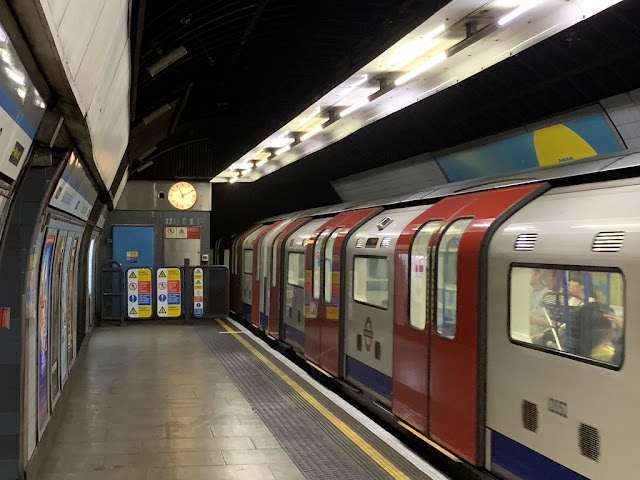Highbury & Islington is an interchange station in North London serving National Rail, London Overground and Underground services. It is typical of a number of London stations which has grown in size and complexity over the years as new lines have reached it.
 |
| London Overground departure |
The original station was called
Islington and was opened by the North London Railway [1] in 1850. The station was (somewhat unusually) renamed
Highbury or Islington in 1867 before the "or" was replaced by "and" in 1872.
| Information |
| Type: |
National Rail (Northern City Line) &
Transport for London (London Overground, Victoria Line) |
| Station codes: |
HHY (National Rail)
ZHI (TfL) |
| Opened: |
1850 |
| Platforms: |
8 |
In 1904 a new underground station adjacent to it was built by the Great Northern & City Railway. This was operated by the Metropolitan Railway and later part of the Northern Line before being transferred to British Rail in the 1970s. The London Underground Victoria Line reached the Highbury & Islington in 1967 [2], which was when the current station building was built.
Nowadays the station has eight platforms and is served by the Victoria Line, London Overground and Great Northern's Northern City Line.
The station, which is managed by Transport for London, is a busy one with nearly twenty million passengers a year on the National Rail platforms and not much less than that on the Underground.
 |
| London Underground 378 256 arrives |
 |
| View down an overground platform |
 |
| Northern City Line platform |
 |
| Platform view |
 |
| Victoria Line tile motif |
[1] Vic Mitchell & Keith Smith, North London Line (Middleton Press, 1997) Fig. 37
[2] Jason Cross, London Underground Guide 2017 (Train Crazy, 2017) p. 131
















































